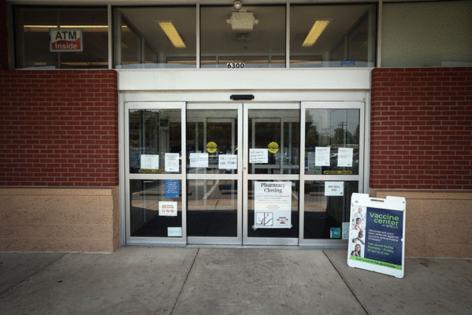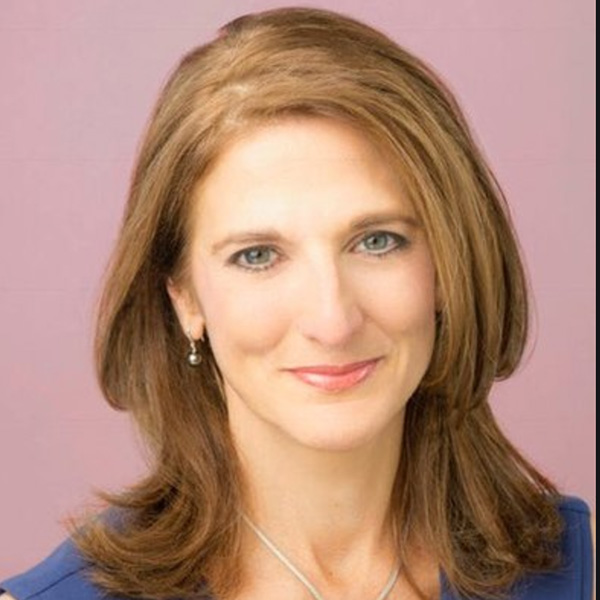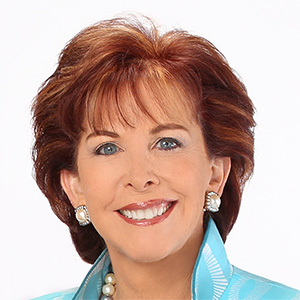'A retail apocalypse': Big box and chain retailers undergo wave of closures
Published in Business News
BALTIMORE — Customers who ventured into Rite Aid at Gittings Marketplace in North Baltimore during its final week in mid-June found a shuttered pharmacy, empty refrigerator cases and an assortment of greeting cards and beauty products at 90% off, but little else.
Across from the drugstore on York Road, a Party City sign tops a building that the balloon and party supply retailer left in February. Three miles away at Towson Place in Baltimore's northern suburbs, vast pockets remain at former Bed Bath & Beyond and Walmart stores.
It’s a pattern repeated across the Baltimore region and elsewhere as struggling “big box” and chain retailers accelerate store closures amid intense competition, economic challenges and consumers’ growing reliance on online shopping. Some retailers filed for bankruptcy. Many, backed by private equity, expanded too quickly and became burdened with debt.
Looming trade tariffs and a slowing economy won’t help, but “every retailer that’s closed has had something else that’s not been going quite right for them, and they’ve been pushed over the edge,” said Neil Saunders, managing director of GlobalData, a retail analysis and consulting firm. “Some of the retailers that have failed weren’t really innovating or thinking about the customer very well.”
Troubled brands include Party City, Big Lots, Macy’s, Kohl’s, Joann Fabrics, which is closing all 800 U.S. stores, and others. Coresight Research expects store closures this year to double to about 15,000 after a spike last year. Still, analysts agree the in-store experience is far from over.
“It seems we’re in a retail apocalypse, but if you look at the numbers, our vacancy for retail real estate is very low” across the U.S., said James Cook, Americas director of research, retail, for JLL. “There’s a shifting in dynamics around the right uses for physical retail. It’s not like physical retail is going away.”
‘No patience’ for disorganized stores
Recent closures have been due in part to inflation and “a growing preference among consumers to shop online to find the cheapest deals,” Deborah Weinswig, Coresight’s CEO, said in announcing the retail and technology advisory firm’s predictions earlier this year. “Not only do they want the best prices, but they also have no patience for stores that are constantly disorganized, out of stock, and that deliver poor customer service.”
Retailers are grappling with questions about what consumers want next and how they’ll expect demands to be met, both online and in brick-and-mortar settings.
Leann Sabb, a 38-year-old resident of Nottingham in Baltimore County, said it has become more difficult to find what she needs in stores. She’s come to rely on Target as a one-stop destination for clothing, food and other essentials. And she shops online a lot.
“It’s easier, I guess, than going out,” Sabb said. “You can get pretty much anything delivered.”
Experiential concepts
New store openings and expansions are underway by off-price brands such as Burlington and Nordstrom Rack. Big box chain Dick’s Sporting Goods is looking to grow through new experiential concepts. Some former retail space is being snapped up by health and medical services or for recreational uses such as indoor pickleball.
All the comings and goings can be unsettling for senior citizens such as Zina Finch, 87, who has been shopping in the North Baltimore and Towson neighborhoods since her Morgan State University college days and shops only in person.
“I’ve seen the change, and it’s kind of inconvenient when a lot of the places close down,” she said. “You have to learn how to adjust. … It’s a hard adjustment, especially when you’re so used to going to certain stores.”
‘Significant investments’
Merchants are figuring out the most effective ways to draw shoppers, trying to offer clear reasons to shop, along with value for both their money and time.
Dick’s CEO Lauren Hobart told analysts on an earnings call in March that the retailer plans “significant investments” both in digital and stores, including expanding House of Sport and Field House brands, website Retail Dive reported in March. New concepts featuring climbing walls and batting cages have helped Dick’s lure customers away from department stores and mass merchants, analysts said.
Dick’s has signed up for one of the longtime vacancies at Towson Place in a former Bed Bath & Beyond, said Jen Maisch, a spokeswoman for Kimco, the center’s real estate broker. The home goods store closed in 2023 in a chain bankruptcy, and the former Walmart remains vacant.
“On the Walmart space, we’re actively marketing it, and there’s been considerable interest,” she said in an email.
‘Not a lot of new construction’
Newly available space typically attracts interest from a mix of national, regional and local retailers looking to expand their business, said Brad Buslik, a principal at H&R Realty.
The real estate brokerage represents Anneslie Shopping Center, where Party City’s more than 12,000 square feet of vacancy is sparking interest, Buslik said.
“It’s a really well-positioned shopping center, and in today’s market, there’s not been a plethora of large format retail space available,” he said. “There is demand for groups to grow and not a lot of new construction anywhere. When supply comes on the market you do see interest.”
The shopping center’s owners are “motivated to make sure they make the right decision for the shopping center” and the community, he said.
Drugstore ‘service isn’t very good’
Recent retail closures include drugstores, with Walgreens shuttering 1,200 locations over three years and CVS continuing to trim its store count. Chain drugstores have over-expanded, rushing to keep up with competitors at numerous intersections, without investing enough in consumers, analysts said.
“The service isn’t very good, the pharmacies have long wait times very often, and a lot of people have gone elsewhere,” Saunders said. “They tend to charge a premium for basic things … and consumers don’t want that.”
The once-dominant Rite Aid, saddled with high debt and liabilities from opioid crisis lawsuits, filed for its second bankruptcy in May, saying it plans to sell all assets. It has so far announced closures of 15 Maryland stores, most in the Baltimore area, as part of hundreds of closings, and started transferring customers’ prescriptions to other pharmacies.
Financial challenges for the 60-year-old drugstore have been “intensified by the rapidly evolving retail and healthcare landscapes in which we operate, said Matt Schroeder, Rite Aid’s CEO, in a May 5 announcement.
Some drugstore sites may be the most difficult to fill, especially standalone sites in rural areas, Cook said.
That’s because that type of space is expected to be less in demand than some of the vacancies left in shopping centers with mass merchants and specialty chains. Bed, Bath & Beyond stores, for example, were typically part of prime shopping centers in desirable locations and could be easily converted for one or two tenants.
A drugstore, though, “is larger than what most expanding tenants are looking for right now,” Cook said. And “most of the tenants that are smaller that are expanding are going to be fast-casual or quick service restaurants, and those spaces aren’t configured for food.”
Majority still wants to shop in person; will AI help?
Online shopping has contributed to store closings, but it still accounts for a relatively small portion of overall retail sales, about 14%. In a JLL survey last year, 67% of shoppers in 10 countries said they prefer shopping in person to shopping online.
But to stay competitive, retailers will need to embrace consumer choice and technology such as artificial intelligence, a JLL report on the future of retail said. The report predicts that technologies that allow “smart” refrigerators to track food inventory and generate shopping lists will ultimately lead to the use of AI for tasks such as placing store orders and making deliveries with unmanned drones.
Shopping centers, too, need to consider such technology, the report suggested.
“An interactive billboard could show an interested passerby how they might look wearing a piece from a designer’s latest collection,” according to one potential future scenario.
Despite worries about tariffs and rising prices, Saunders said, consumers have been resilient.
“Spending isn’t the problem,” he said, “The spoils of spending are not divided equally. Consumers are very discerning about where they shop. Some retailers are really struggling to take a cut of that spending, and that’s where you see the problems and the failures.”
©2025 The Baltimore Sun. Visit at baltimoresun.com. Distributed by Tribune Content Agency, LLC.












Comments